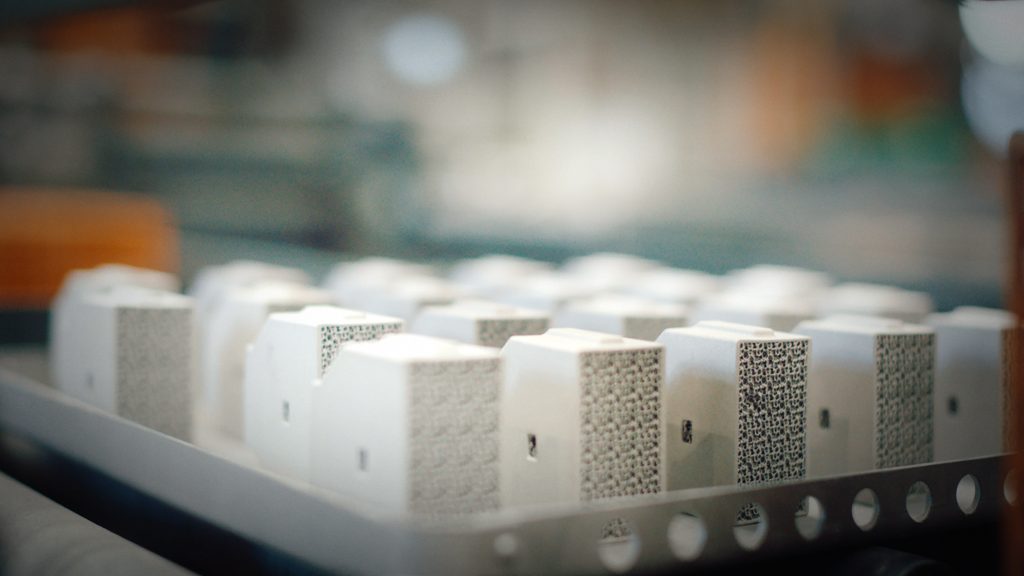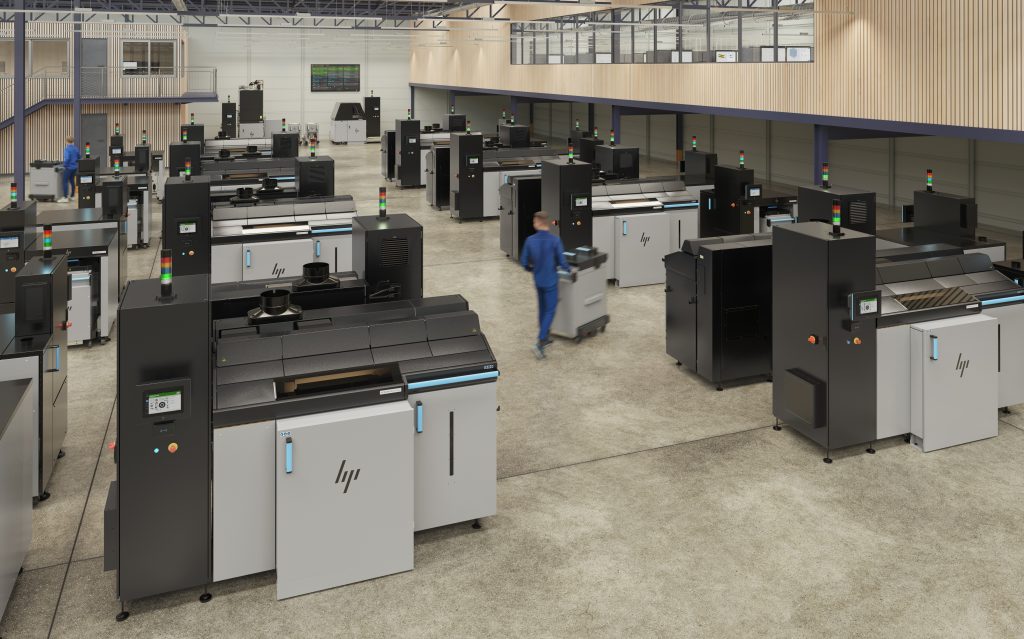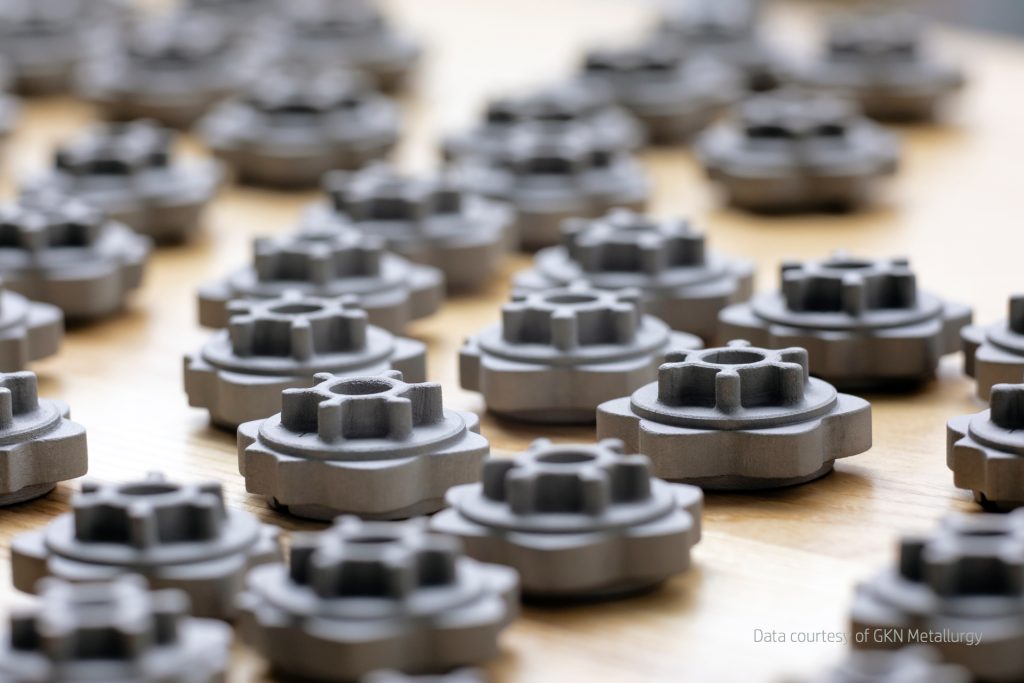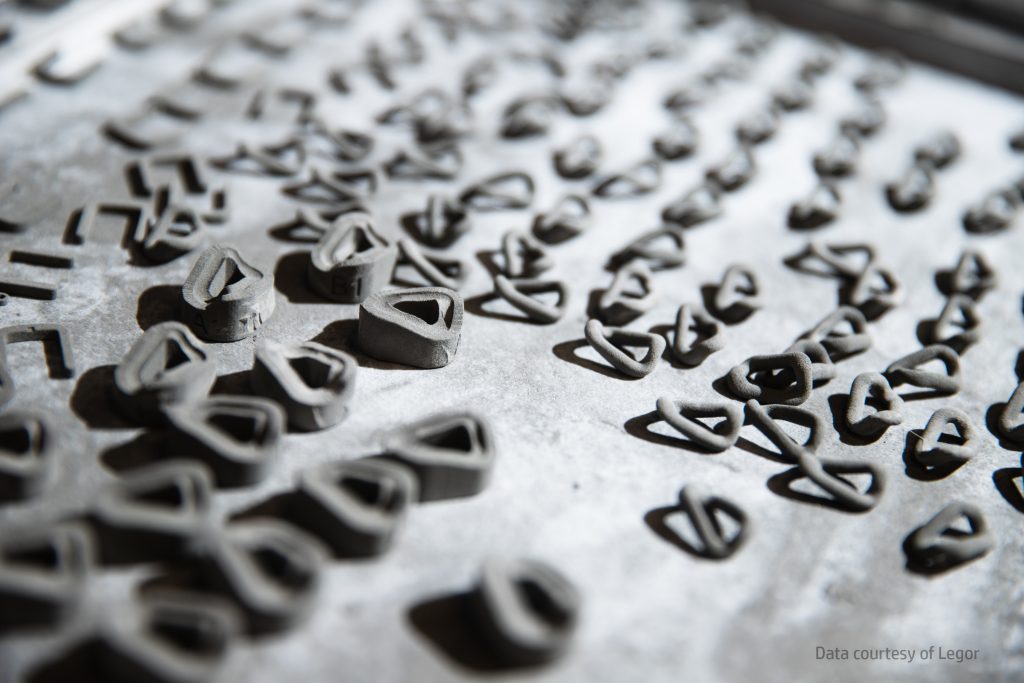Global leader in energy and industrial automation Schneider Electric has become the latest to praise the manufacturing opportunities unlocked by the new metal 3D printer from HP.
At IMTS last year, HP made its long-awaited metal 3D printing debut with the launch of the Metal Jet S100, a binder jet system capable of economically 3D printing high volumes of end-use parts. At the time, much was made of the machine’s cost-efficiency thanks to its compatibility with industry-standard Metal Injection Molding (MIM) materials from established global powder suppliers. In fact, it was said this would remove one of the barriers to scaling metal 3D printing in industrial settings.

Since then, the Metal Jet S100 has hit the market, and HP’s promises to deliver metal 3D printing at scale appear to be coming to fruition. One of the company’s early customers, Schneider Electric, has been especially vocal in its praise for the machine. In particular, the manufacturer has found HP Metal Jet technology ideal for producing power filters with new, more sustainable geometries, at higher volumes.
“We are excited about the new possibilities for our business as a result of this collaboration with HP,” explained Michael Lotfy, SVP of Power Products & Systems, North America at Schneider Electric. “Leveraging HP Metal Jet, our teams have delivered a proven use case showcasing the benefits of digital manufacturing and 3D printing, and we look forward to uncovering many more applications that meet the evolving demands of our customers.”
“We are excited about the new possibilities for our business as a result of this collaboration with HP.”
HP’s journey into metal 3D printing
While the Metal Jet is already proving a success, HP is better known in the 3D printing industry as a developer of polymer manufacturing technologies. Since the company unveiled its Multi Jet Fusion (MJF) technology in 2014, HP systems have 3D printed over 170 million parts, with applications ranging from medical to those in the aerospace sector.
In recent times, MJF has been deployed in the 3D printing of automotive spares by Toyota and SOLIZE, as a means of reducing related costs and lead times. HP’s offering also continues to gain traction in areas such as packaging, and it has previously partnered with the likes of L’Oréal to explore its cosmetic packaging 3D printing potential.
However, not satisfied with a foothold in the polymer space, HP has long been developing a metal 3D printing entry alongside manufacturing stalwarts Parmatech, GKN Powder Metallurgy, and the Legor Group. While teased in 2018, this machine didn’t break cover until four years later, when it was launched in full, complete with ancillaries, and touted automotive, industrial, and consumer goods 3D printing applications.

The S100: a debut metal 3D printer by HP
HP’s debut metal 3D printing system functions using multiple print bars for high productivity and nozzle redundancy. The HP Thermal Inkjet printhead is a complex, integrated system that controls how and where to apply fluids. This setup is said to allow HP Metal Jet to accurately apply binder and produce strong parts with outstanding definition. Each printhead produces a 108-mm (4.25-inch) print swathe with two independent columns of 5,280 nozzles that are spaced at 1200/inch in each column.
The machine also features two independent supply ports for HP Metal Jet binding agent and two built-in pressure regulators. In practice, HP Metal Jet printers address a 1200 x 1200 dpi grid with a layer typically between 35 and 140 microns thick. HP Metal Jet’s high voxel resolution then produces fine details and precision definition of edges and surfaces both inside and outside the part, as defects are suppressed with four-times nozzle redundancy.
Resulting parts are said to feature a high level of surface finish and accuracy, while the technology’s minimal reliance on binding agents allows for thicker and larger mass parts. As with other binder jetting processes, HP’s also negates the need for any time-consuming support removal.
As such, the company markets the Metal Jet S100 as a means of producing high volumes of quality metal parts with end-use applications in a range of industries – including automotive, medical, industrial and consumer goods. For instance, using one of the two proprietary materials launched alongside the machine, SS 316L, HP says it’s possible to 3D print components like fluidic manifolds with previously impossible geometries that optimize heat transfer within automotive builds.

Testimonies to HP metal 3D printing
Since launching its debut metal 3D printer, HP has published several partner testimonies that reveal how initial adopters are deploying it in practice. At agricultural machinery manufacturer John Deere, the technology is now being deployed in the production of tractor fuel system valves, with environmental, productivity, and durability improvements.
“Our focus on innovation and sustainability is at the core of everything we do for our customers,” said Dr. Jochen Müller, Manager of Global Digital Engineering at John Deere. “We are proud to be among the first in the agricultural industry to leverage the benefits 3D printing for both prototyping and final parts production. Leveraging industrial 3D printing platforms for polymers and metals, we are discovering opportunities to deliver more efficient, reliable, and sustainable equipment.”
Elsewhere, HP is also working with the Legor Group to develop innovative new precious metal materials for use with its Metal Jet system. While their collaboration will initially see the firms focus on developing functional stainless steel accessories for the jewelry and fashion markets, they later aim to characterize bronze, silver, and gold powders for 3D printing.
“Our work with Legor aligns perfectly with HP’s vision to disrupt manufacturing norms, accelerate digital manufacturing and sustainable impact for customers around the world,” added Didier Deltort, President of HP Personalization & 3D Printing. “The combination of our breakthrough Metal Jet 3D printing platform with Legor’s materials expertise and customer-centric approach will disrupt the luxury jewelry and fashion industries.”
Any questions? Reach out to a metal 3D printing expert here.

HP sponsored this article.
To stay up to date with the latest 3D printing news, don’t forget to subscribe to the 3D Printing Industry newsletter or follow us on Twitter or liking our page on Facebook.
While you’re here, why not subscribe to our Youtube channel? featuring discussion, debriefs, video shorts and webinar replays.
Are you looking for a job in the additive manufacturing industry? Visit 3D Printing Jobs for a selection of roles in the industry.
Featured image shows a fleet of metal 3D printers on production floor – HP Metal Jet S100. Photo via HP.



